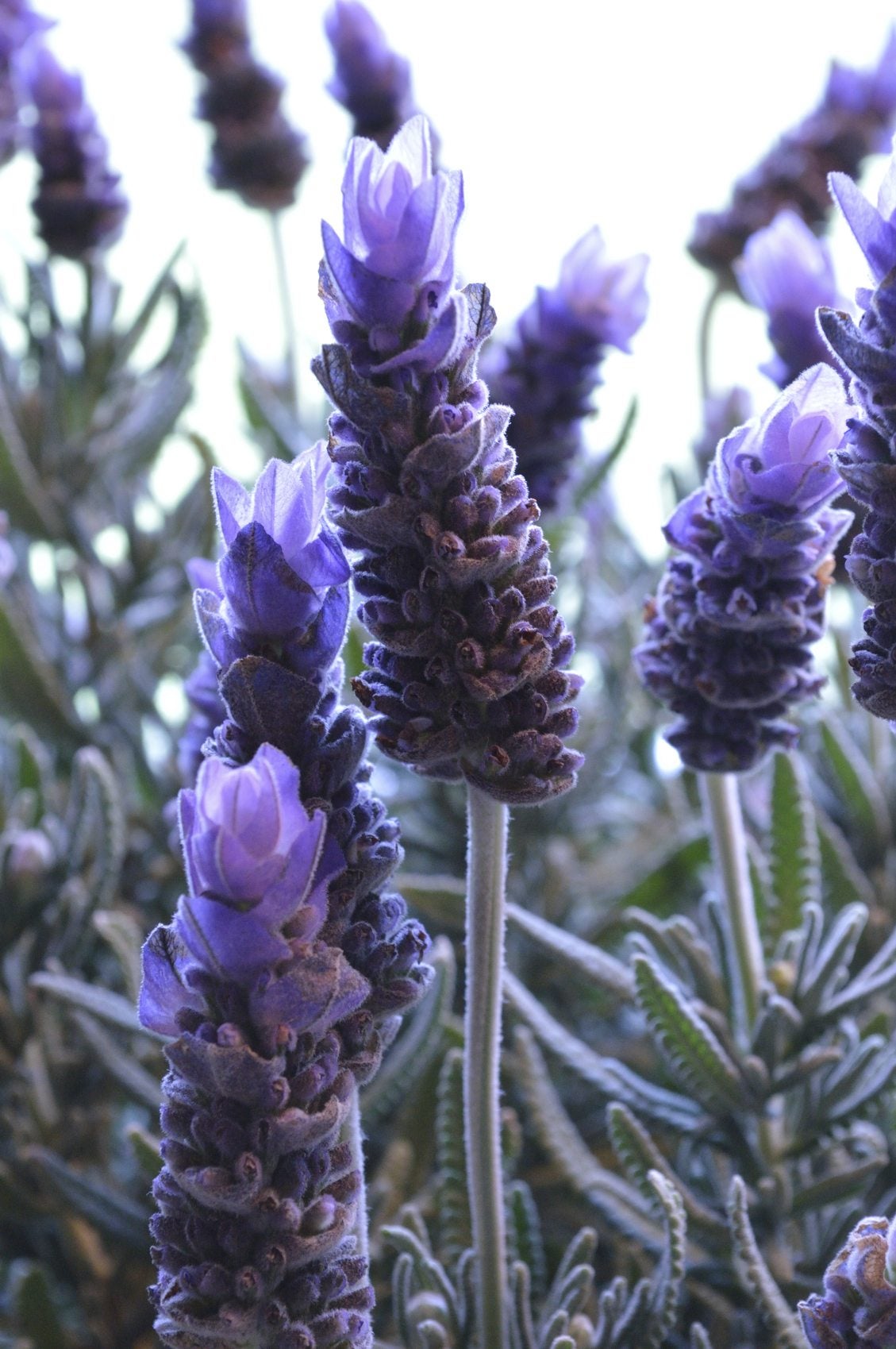To feed lavender, apply a balanced organic fertilizer in early spring and again in late summer. Lavender is a beautiful and aromatic plant that can thrive in a variety of conditions.
Whether you are growing lavender in your garden or in pots, proper feeding is essential to ensure healthy growth and vibrant blooms. We will discuss how to feed lavender and some tips for keeping your plants looking their best. By following these guidelines, you can enjoy the beauty and fragrance of lavender all season long.
So let’s get started and learn how to properly feed lavender plants in just a few simple steps.

Credit: thisnzlife.co.nz
What Type Of Soil Is Best For Lavender?
For successful lavender growth, it is crucial to provide it with well-draining soil. Lavender thrives in sandy or loamy soil that allows proper drainage, preventing the roots from becoming waterlogged. The ideal soil composition should be a combination of sand, silt, and clay, with an emphasis on the sandy side for sufficient drainage.
pH level requirements
Lavender prefers a slightly acidic to neutral pH level ranging from 6.0 to 8.0. It is important to test your soil’s pH level using a testing kit to ensure it falls within this range. If the pH is too low or too high, consider making amendments to adjust the soil acidity before planting lavender.
Organic matter
Incorporating organic matter, such as compost or well-rotted manure, into the soil before planting lavender can provide numerous benefits. Organic matter improves soil structure, water retention, and nutrient availability, promoting healthier root development and overall plant growth. It also contributes to the long-term fertility of the soil, helping lavender flourish for years to come.
How to Feed Lavender: Step by Step Guide
Preparing The Soil
When it comes to feeding lavender, preparing the soil is crucial for its growth and development. One of the first steps is clearing the area where you plan to plant the lavender. This involves removing any weeds and rocks that may hinder its growth. Weeds compete for nutrients and can suffocate the lavender, while rocks can impact drainage and cause root rot.
Once the area is cleared, it’s important to add compost or organic matter to enrich the soil. Lavender thrives in well-draining soil with a slightly alkaline pH. Adding compost helps improve soil structure, retain moisture, and provide essential nutrients. Organic matter such as well-rotted manure or leaf mold can also be beneficial.
Remember to mix the compost or organic matter thoroughly with the existing soil to create a balanced environment for the lavender’s root system. This will ensure proper nutrient uptake and promote healthy growth. By following these steps, you can create an optimal soil condition for feeding lavender.
Frequency Of Watering
Lavender is a popular herb known for its beautiful fragrance and vibrant purple flowers. When it comes to watering lavender, understanding its water needs is essential to ensure healthy growth. Lavender plants prefer well-draining soil, so overwatering can lead to root rot and other issues. It is important to establish a watering routine that strikes a balance between keeping the soil consistently moist and avoiding waterlogged conditions.
As a general rule, lavender plants should be watered deeply once a week, allowing the soil to dry out slightly between waterings. During hot and dry periods, more frequent watering may be necessary. On the other hand, during cool and rainy periods, watering can be reduced to prevent excessive moisture. Remember to always check the moisture level of the soil before watering to avoid overwatering.
In addition to regular watering, lavender can benefit from a layer of organic mulch around the base of the plant. Mulch helps retain moisture in the soil and prevents weed growth. However, avoid piling mulch against the stems, as this can lead to stem rot. Instead, leave a small gap between the mulch and the base of the plant to allow for air circulation.
| Watering Frequency | Weather Conditions |
|---|---|
| Once a week | Hot and dry periods |
| Adjust as needed | Cool and rainy periods |
By understanding the water needs of lavender and providing the right amount of moisture, you can help your lavender plants thrive and enjoy their aromatic and enchanting beauty for years to come.
Proper Watering Techniques
Proper watering techniques are essential for the health and growth of lavender plants. When watering lavender, it is important to water at the base of the plant rather than on the leaves or flowers. This helps to avoid wetting the leaves and flowers, which can lead to fungal diseases and rot. Monitoring soil moisture levels is also crucial to prevent overwatering or underwatering.
When watering lavender, make sure the soil is completely dry between waterings. Lavender plants prefer well-draining soil and do not tolerate soggy conditions. Water deeply and thoroughly, allowing the water to penetrate the root zone.
To determine if the lavender plant needs water, check the soil moisture by inserting your finger into the soil up to the knuckle. If the soil feels dry at that depth, it’s time to water. On the other hand, if the soil feels moist, wait before watering again.
Remember, overwatering is one of the most common mistakes when caring for lavender. Excess moisture can cause root rot and lead to the decline of the plant. By following proper watering techniques, you can help your lavender thrive and enjoy its beautiful blooms and fragrance.
Nutrients Required
For the successful growth of lavender plants, it is essential to provide them with the right balance of nutrients. These nutrients play a crucial role in supporting their overall health and development. Among the essential nutrients needed, three primary macronutrients stand out: nitrogen, phosphorus, and potassium.
Understanding the Role of Nitrogen, Phosphorus, and Potassium
Nitrogen is responsible for promoting healthy foliage and leaf growth. It plays a vital role in the formation of chlorophyll, which is crucial for photosynthesis. Phosphorus contributes to strong root development and flower production. It aids in energy transfer within the plant and enhances overall plant resilience. Potassium, on the other hand, supports various plant functions, including enzyme activation, water retention, and disease resistance.
Providing lavender plants with the right balance of these essential nutrients is imperative for optimal growth and blooming. Nitrogen, phosphorus, and potassium can be supplied through organic fertilizers or water-soluble synthetic fertilizers specifically formulated for lavender.
Organic Fertilizer Options
When feeding lavender, there are several organic fertilizer options worth considering. Compost: This nutrient-rich soil amendment can be made at home by combining organic materials like kitchen scraps, yard waste, and leaves. Compost provides a balanced mix of nutrients that lavender plants need to thrive. Manure: Another great option is to use well-rotted animal manure. It not only adds organic matter to the soil but also releases essential nutrients gradually over time. Homemade plant food recipes: For those looking to create their own plant food, there are numerous recipes available. These typically involve combining ingredients like eggshells, coffee grounds, and seaweed to provide lavender plants with the necessary nutrients. |
Application Techniques
When it comes to feeding lavender, application techniques are crucial for its optimal growth. Timing of fertilization plays a vital role in achieving the best results. It’s recommended to fertilize lavender in early spring, just as new growth begins. This timing ensures that the plant receives the nutrients it needs during its active growing season.
Mixing and spreading fertilizer should be done with care. Use a balanced slow-release fertilizer specifically formulated for lavender plants. Follow the instructions on the fertilizer package for the correct dilution rates and application methods. Spread the fertilizer evenly around the base of the plant, avoiding direct contact with the foliage.
Avoiding over-fertilization is important to prevent damage to the lavender plant. It’s best to apply fertilizers sparingly, following the recommended dosage. Lavender prefers a lean soil, and excessive nutrients can lead to weak growth and reduced flower production.
Frequently Asked Questions Of How To Feed Lavender
How Often Should I Water My Lavender Plants?
Water your lavender plants deeply but infrequently. Lavender prefers dry soil, so water them only when the soil is completely dry to the touch, usually every 2-3 weeks. Overwatering can cause root rot and kill the plants.
Can Lavender Survive In Cold Climates?
Most lavender varieties are hardy and can survive in cold climates, but they may need some protection during the winter months. Mulching around the base of the plants with straw or leaves and covering them with burlap can help protect them from freezing temperatures.
When Is The Best Time To Prune Lavender?
The best time to prune lavender is after it has finished blooming, typically in the late summer or early fall. Pruning at this time allows the plant to recover before the colder months and promotes new growth and better flowering the following year.
Prune about one-third of the plant’s height.
How Do I Fertilize Lavender Plants?
Fertilize lavender plants sparingly. Too much fertilizer can cause the plants to become leggy and produce fewer flowers. Use a well-balanced organic fertilizer in the spring, applying it around the base of the plants. Avoid using high-nitrogen fertilizers as they can stimulate excessive leaf growth.
Conclusion
To ensure the healthy growth and vibrant blooms of your lavender plants, it is crucial to provide them with proper feeding. By understanding the specific nutritional needs of lavender and implementing the right feeding techniques, you can encourage robust foliage and abundant flowers.
Remember to use organic fertilizers, avoid overfeeding, and cater to the unique requirements of different lavender varieties. With a little care and attention to feeding, your lavender plants will flourish, providing beauty and fragrance to your garden for years to come.

